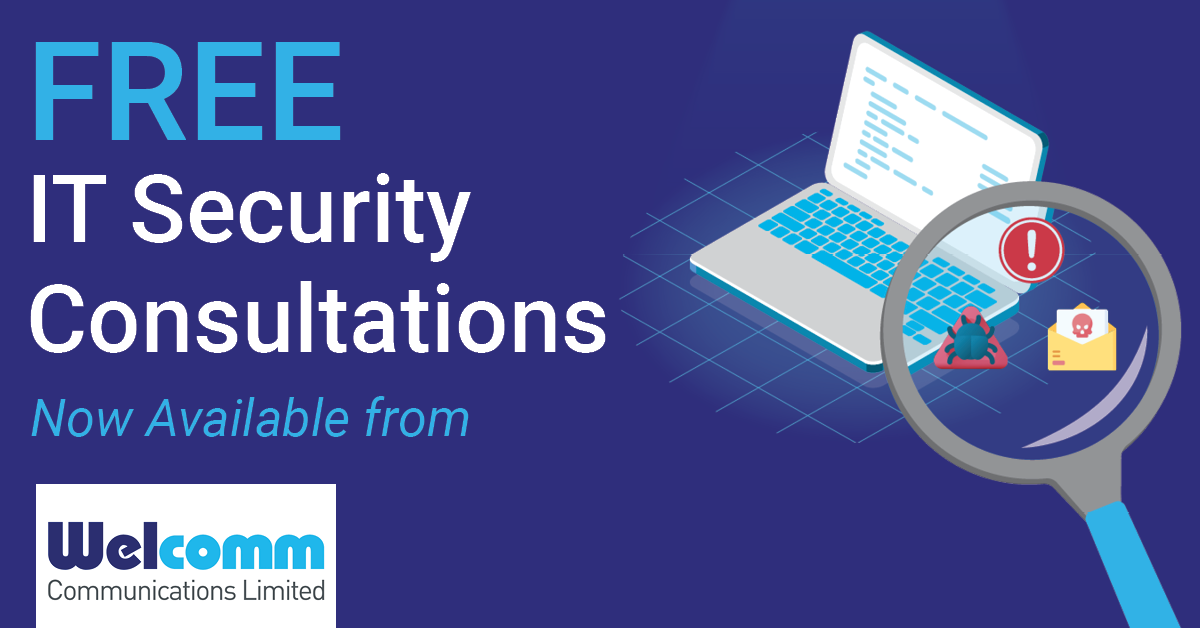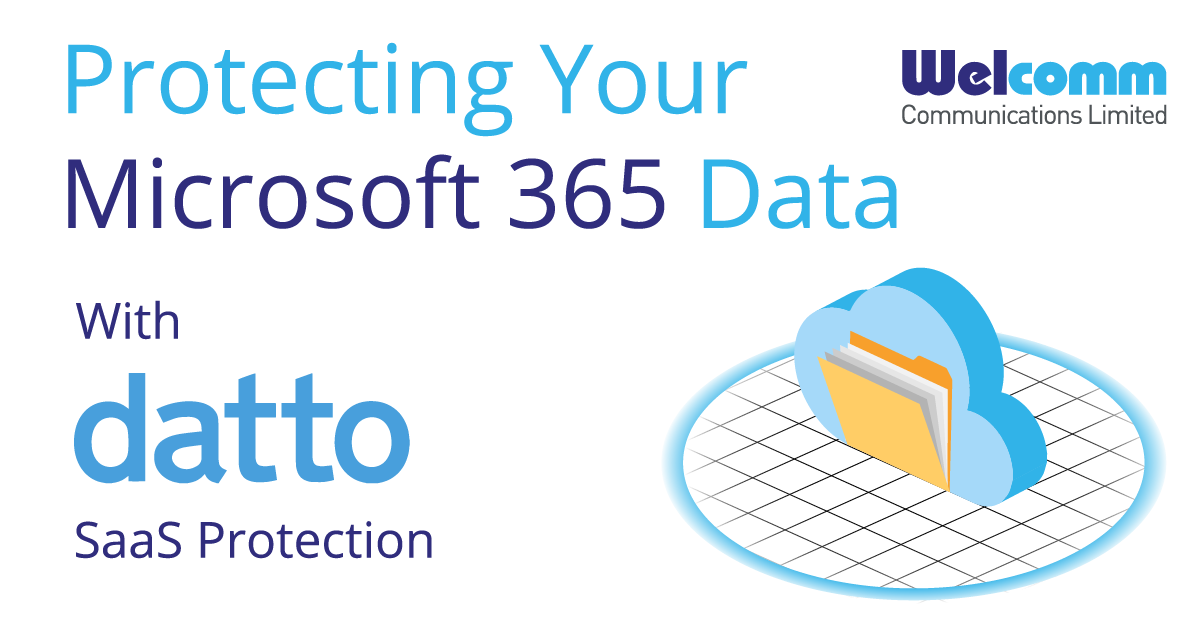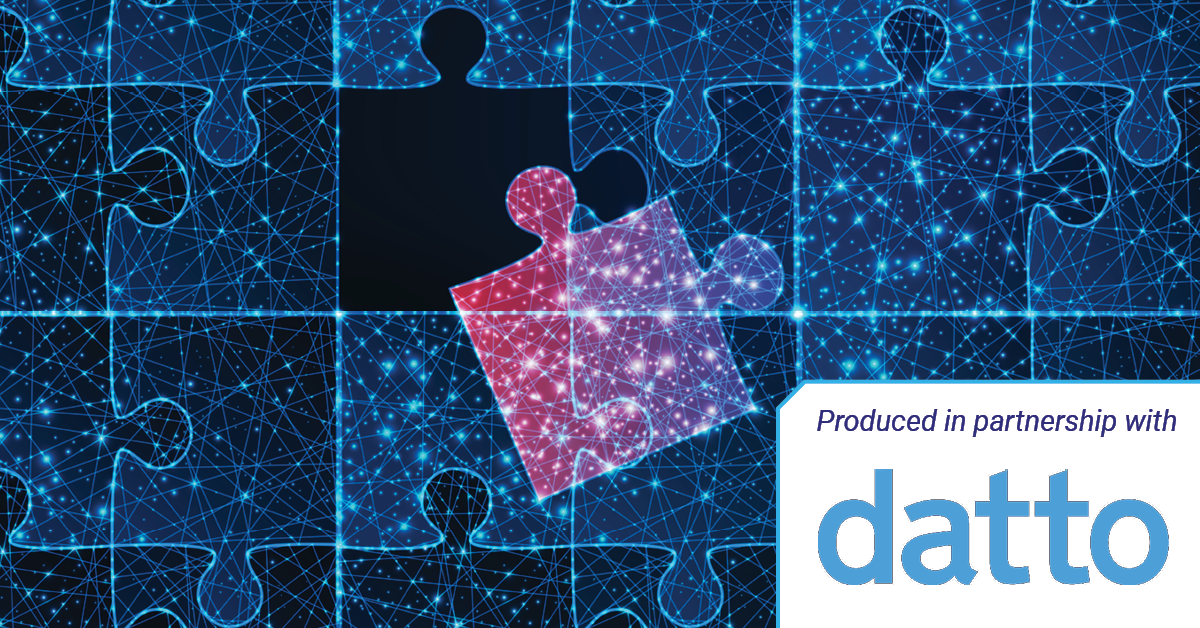
Your Data Back-Up & Cyber Security Challenges Resolved
Debunking myths about the safety of your company data.

By Greg Jones
For businesses of all sizes, data protection and cyber security remain current and pressing issues. In my role as Business Development Director for Datto, I hear many concerns from organisations across the globe, as they try to respond to the challenging task of keeping their company data protected.
As a global security company that looks after data integrity, Datto works with partners such as Welcomm to ensure business owners can operate with the confidence that their data is always protected, even if the worst should happen.
With the threat landscape constantly changing and evolving, including for small-medium businesses (SMBs), information and awareness are the first step in protecting yourself from data loss. So today I want to share some home truths – to debunk the most common ‘myths’ I hear regarding how protected your data actually is, and what the biggest threats currently are for businesses.
Your data is not automatically backed up in the cloud.
The first myth I am debunking today actually concerns data protection and the backing up of data within your organisation. Many businesses believe that data in the cloud is actually automatically backed up…
So, for instance, if they are paying for a cloud-based service, such as Microsoft 365 or Google’s G-Suite, they assume that the data created and stored within the service is automatically backed up. However, this is not the case!
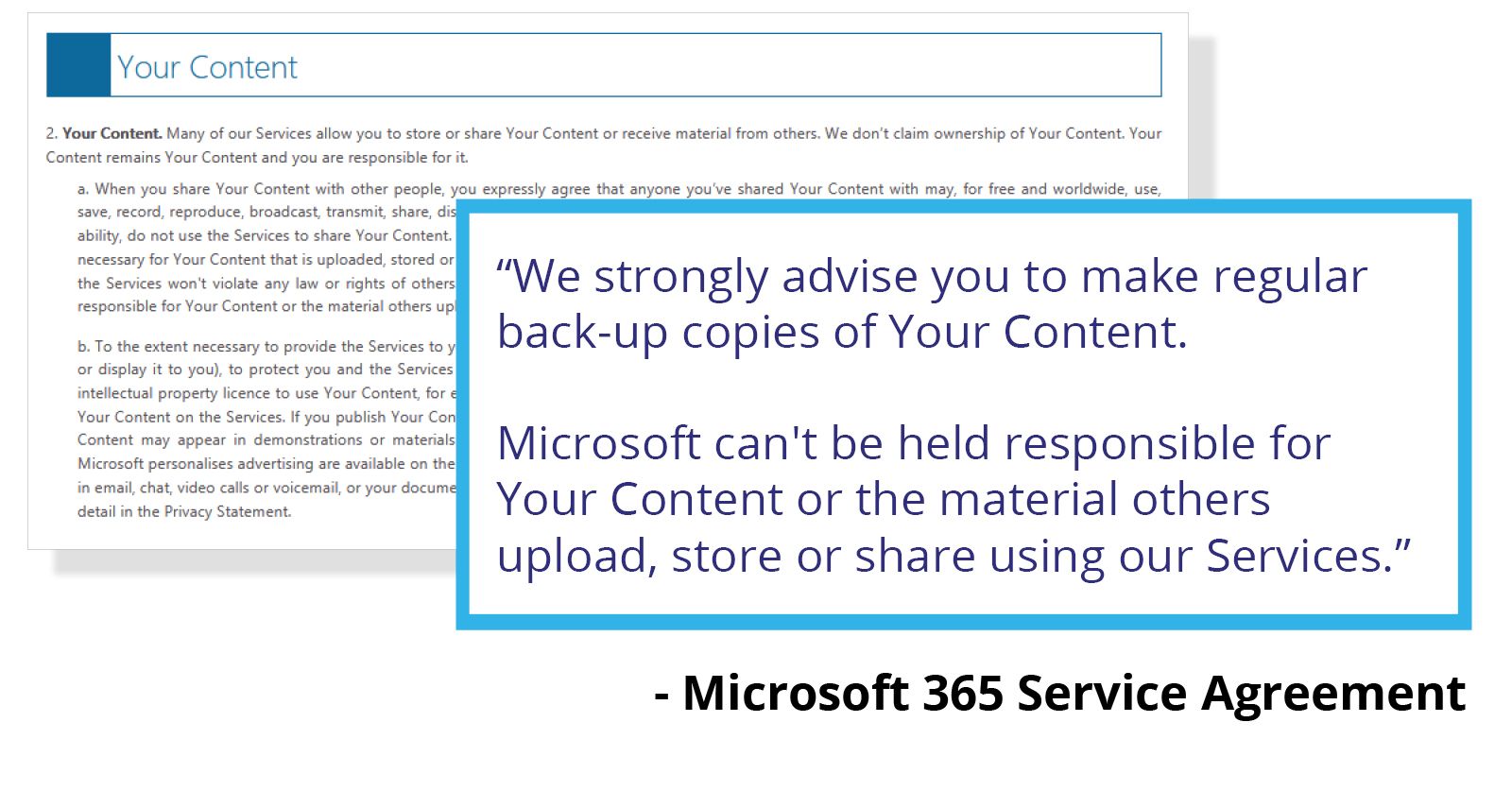
If you read through the likes of Microsoft or Google’s end user license agreements, you will find that both companies advise that they do not protect the integrity of your data, and you should utilise additional third party back-up, such as Datto’s SaaS Protection solution.
This point goes straight to the top of my list, as many SMBs I speak to incorrectly believe that everything stored in the cloud is safe, secure and protected – and unfortunately that is simply not the case!
Your business needs more than ‘Cyber Security’ to protect your data.
Many organisations that I speak to, across the world, really focus on cyber security for their business. They have concerns, and rightly so, because the threat landscape is ever-changing and we are seeing cyber crime and ransomware at an all-time high.
However, SMBs in particular should not just be focusing on cyber security, but should really aiming for ‘Cyber Resiliency’.
Cyber resilience is a measure of a business’s strength in the ability to prepare for, operate through and actually recover from a cyber attack. Cyber security is only a small factor when securing data, and one of the reasons we advise our customers to strive for Cyber resilience, is because it is a truly holistic approach that remains relevant in a forever changing threat landscape.
Cyber Resilience is made up of three main pillars:

People

Process

Technology
Many businesses fall foul of the risk of just running ahead with technology to try and protect their organisation, but to implement Cyber Resilience correctly, you should be focusing on your people first.
Increasing the knowledge and awareness of your people through education and training then allows you to move on to process. This includes the processes that your business follows around cyber resilience, cyber security and how you operate. Finally, technology should come in as your third point of review.
If you immediately focus on technology to protect your organisation, that can sometimes change how you implement your people and your processes within your business, leading to security vulnerabilities.
Cyber Crime is a threat to all organisations, regardless of size.
Organisations worrying about Cyber Security often feel they don’t quite know where to turn, or where to begin. One important point I want to raise today is that, where data security is concerned, every business is the same. From somebody starting a business today or tomorrow, to huge blue chip organisations, all businesses face the same challenges around protecting their critical data.
Businesses of all size are at risk from data loss caused by:

Accidental Deletion

Malicious Attacks

Cyber Crime & Phishing Scams
Regardless of the budget size that you allocate to protect your business, or the investments you make in your IT department, every business faces the same risk; People. Why? Because we are the wild cards.
Truthfully, people are the biggest risk to any organisation because of their unpredictability. Whether it be accidental deletion of data, a malicious act, or even a member of staff being tricked by a phishing scam containing ransomware – your business remains at risk if adequate protections are not put in place.
The difference between ‘Back-Up’ and ‘BCDR’
When it comes to backing up your data, not all solutions are equal! Organisations that already employ a backup solution assume that, once their data is stored elsewhere, they are safe and secure and can be operational again quickly. However, with standard backup solutions, this is simply not true.
Backup solutions can be classified in two ways:

Back-Up
Back-up simply means that your important business data, files and documents are copied and stored ‘outside’ of your business premises.
In the event of data loss at your business, this data will still need to be reinstalled/redownloaded somehow, potentially incurring costly operational downtime.

BCDR
Business Continuity and Disaster Recovery solutions securely copy both your critical data, and make a copy of the devices that data is stored on.
In the event of a data loss at your business, your data and hardware can be quickly restored and operational within minutes, reducing any costly downtime.
With a properly implemented BCDR solution, if your business did unfortunately experience a catastrophic event such as a ransomware attack, a flood or fire, or even theft, your data can be restored within minutes to a location of your choice. This ensures that your critical data can be accessed anywhere, at any time, for true business continuity.
Your business needs a Technology Plan.
Many organisations I speak to regard technology as a standalone element to their business, and perhaps something they review as a lower priority. However, as we have all seen throughout the COVID pandemic, technology has become integral to all businesses.
The businesses that have invested in technology to enable remote working during the COVID-19 pandemic are now in many cases operating more successfully, profitably and productively. This is why I strongly recommend that, as you build out a business plan for your organisation, you also have a technology plan that runs alongside it.
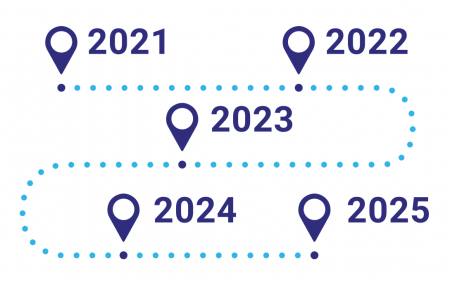
A successful technology plan should look at where your organisation is today, how you are using technology within your business, and ultimately where you plan to be in the future. The best way to achieve your technology goals as an organisation is to set out a roadmap that aligns itself with your business plan, giving you the tools you need, when you need them.
This is something that a technology partner such as Welcomm can help you develop. Their specialists will help recommend the solutions your business needs to achieve its goals, and ensure that they are implemented in the right way, at the right time.
Extra Support For Your Business
Privacy Policy | Terms & Conditions
Copyright © 2022 Welcomm Communications Ltd - all rights reserved
Company Registration Number: 03815160
